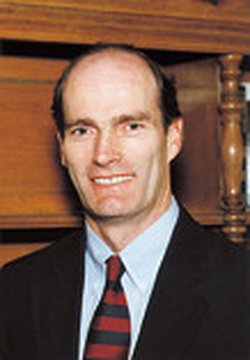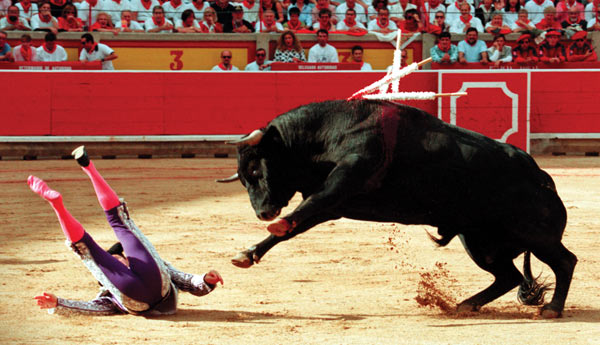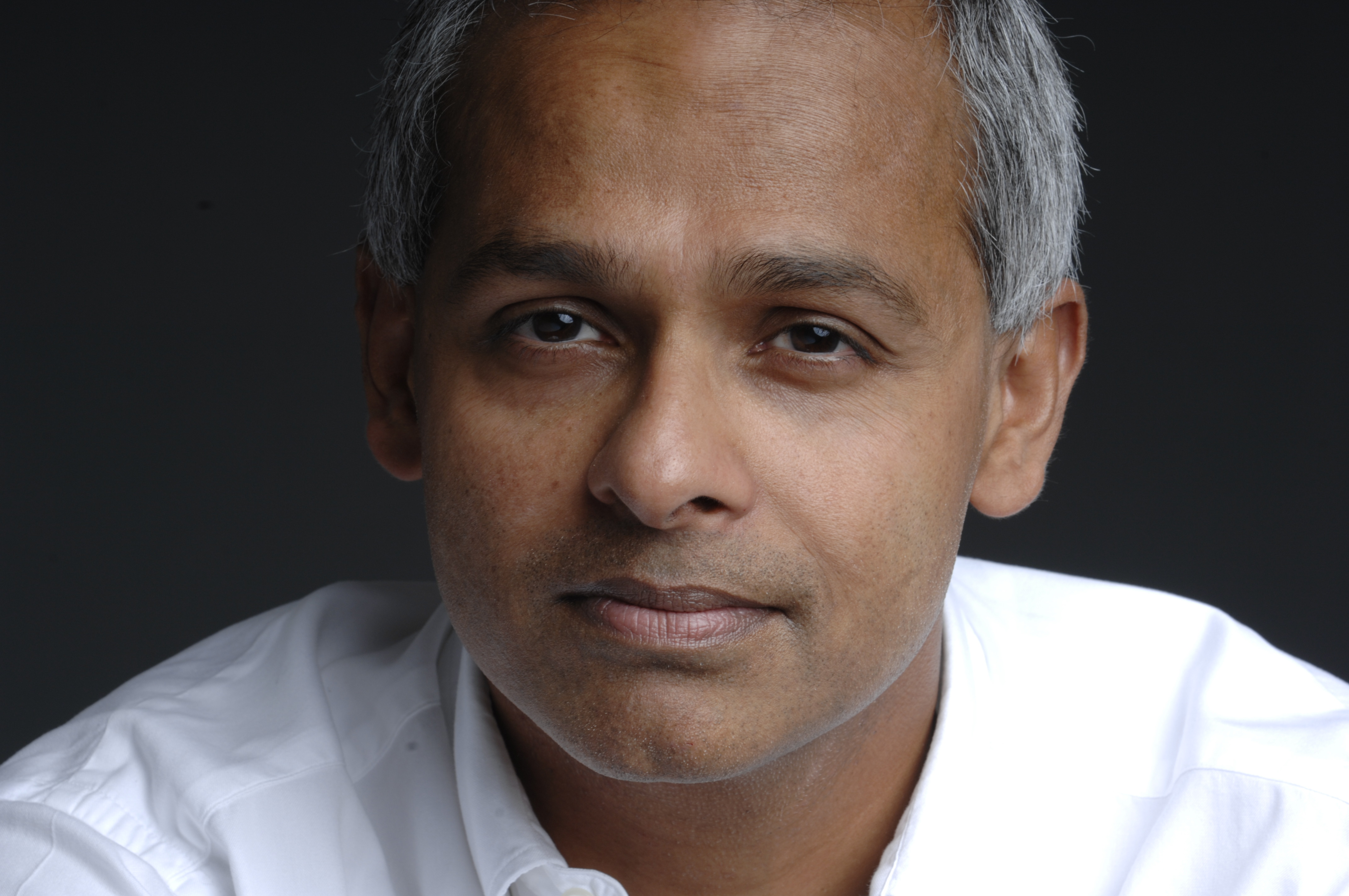 Dear Reader,
Dear Reader,
This is a Special Edition of the Diary. In this I speak to Bill Bonner, whose books and columns I have admired reading tremendously over the years. He founded Agora Inc. in 1979. With his friend and colleague Addison Wiggin, he co-wrote the New York Times best-selling books Financial Reckoning Day and Empire of Debt. His other works include Mobs, Messiahs and Markets (with Lila Rajiva), Dice Have No Memory, and most recently, Hormegeddon: How Too Much of a Good Thing Leads to Disaster.
Even though Bill writes largely on finance and economics, his writing style is close to literary fiction, and that is precisely what makes it so enjoyable to read him.
In this interview we talk about how the world of finance and economics has changed over the last few years. And how does Bill read the world that we live in. This paragraph summarises everything: “I just didn’t think it [i.e. the financial crisis] will go on this long but that’s also one of the realities that things that you think can’t last, actually do last longer than you expect and they get worse than you expect and then after they have gotten much worse and lasted much longer than you expect then you begin to think well maybe I don’t understand something about it and maybe there is something going on here that can last and then of course it blows up and you were right all along and then at that time of course you are not anticipating it.”
This is the first part of the interview. The second part will appear tomorrow.
Happy Reading!
Vivek Kaul
I guess the last time we spoke would probably have been sometime in 2011-2012. So how have things changed?
It was surprising to me that the authorities were more aggressive than I expected coming in with the QE1, QE2 and QE3 and then the twist. And those things as expected didn’t do anything for the economy.
In fact, it may have actually slowed down the real economy. But they did wonders for the stock market and the financial industry so they are very very popular and well those things were essentially reducing the cost of credit, making easy money even easier.
So naturally, there is more and more debt and it just seems to be a phenomenon or fact of life that when you make debt cheap, when you make it cheaper than it should be, you get people borrowing money for things they shouldn’t be doing and too much capacity, too many speculations, too many gambles, too many business expansions that don’t really make any sense.
And what did that lead to?
So we saw the effect of that in the commodity market, particularly the oil market which has been really laid low by this combination of cheap money which made it possible for American drillers to get out there all over the place and drill for oil and some marginal producers in Canada and otherwise in Brazil and everywhere to come up to increase the supply of oil. Meanwhile the actual demand for oil was going down because the world economy was actually not in a growth mode at all.
So we have those kinds of things happening and that’s all happening since the last time we talked and the huge expansion and explosion and implosion of the oil market, implosion of the commodity market and explosion in world debt which has gone up about 57 trillion dollars since 2008. So these things were really much bigger than I anticipated.
I just didn’t think it will go on this long but you that’s also one of the realities that things that you think can’t last, actually do last longer than you expect and they get worse than you expect and then after they have gotten much worse and lasted much longer than you expect, then you begin to think well may be I don’t understand something about it and maybe there is something going on here that can last and then of course it blows up and you were right all along and then at that time of course you are not anticipating it.
So why hasn’t all this debt lead to economic growth? Why hasn’t cheaper money led to economic growth because you know this was one of the beliefs that central bankers had and their actions in the last seven- eight years have been built on the belief that we will flood the markets with money, we will have low interest rates, people will buy, companies will do well and economic growth will return. Why hasn’t this happened?
Why doesn’t that happen? And the answer is hard. I don’t really know. There is a Swedish economist named Knut Wicksell and Knut Wicksell noticed, that whenever the cost of money was too low, he said there were two interest rates.
He said there was a natural rate which is to say the rate that money should cost in a real properly functioning market and then there is the actual rate and the actual rate is jigged up by the authorities in the banking industry. Whenever the actual rate is too low, people do not invest in the kinds of things that will increase real production.
He said what they do, and I never have really fully understood this, but he said what they do when money is too cheap, they tend to go for easy things. So the banks take the easy money which is too cheap and then they invest it in US Governments Securities, you know the 10-year treasury bonds and that way they get guaranteed return, a guaranteed positive carry.
What else did he say?
And then he says that when money is too cheap people make cheap investments, one because they don’t really know what is going on. You know the cheap money distorts the whole picture. The cost of money is the critical number in all of capitalism You have to know what it will cost you really to borrow money. And once you know what the money really costs then you should decide whether you should build a factory, whether you should invest in this, buy that.
You don’t know until you know the real cost of money and by distorting the real cost of money as Wicksell points out what it does is it drives out everybody away from real investment where they don’t really know what they should be doing. They don’t want to invest real money in a project where the returns are uncertain and the value of money is uncertain and everything is uncertain. So they go for these cheap investments. These easy investments such as US treasury bonds where they know they will get paid and so you get a big increase in these debt investments. Hence, just the quantity of debt goes up where everybody is just counting on being able to borrow cheap and lend a little less cheap in order to pocket the difference without any real risk.
Even though the economies as such haven’t recovered, the stock market and the real estate markets in parts of the world have done very very well. So how do you explain that dichotomy? Has the link between economic growth and stock market returns broken down?
Oh! It has totally broken down. We have a chart that we use. We go back to 1971, where we believe something fundamental happened when they changed the US money system. Since 1971 what you see if you look at US GDP growth, it looks more or less normal. I mean the growth rate was higher in the 70s and it gradually went down decade after decade, it got lower and lower.
But you are talking about going down from five to three to four to three to two and now probably about zero percent, but that growth is real…that’s the real economy…that’s Main Street…that’s where people work…that’s where they spend their money…that’s where they earn their money.
When you put that on to that chart, and you put a chart of what the value of America’s stocks and bonds are, then that chart just goes right up after about 1995.
Yes that’s what the chart shows…
And so there is something going on where the stocks and the value of assets is being cut off completely from the value of the real economy that supports them, which is impossible of course.
I mean it is impossible for that to continue because ultimately any asset is only valuable in as much as the economy gives it value. It’s not valuable in itself. If you have a blue jeans factory and you are producing five thousand pairs of blue jeans a day but that is not worth a penny unless you have got people who are willing to buy five thousand blue jeans a day and they can only do that if they are earning enough to buy five thousand blue jeans a day.
And you know that was Say’s principle which was that “Supply creates demand”, which is a funny thing. I mean it’s easy for people to misunderstand that. But what it really means is that it’s only because you have an economy that produces wealth that people have the money to buy what you are making.
So there is no way, it’s absolutely hundred percent impossible for the value of stocks and bonds to be divorced from the value of the economy itself. And what we have seen is a separation and we call it a divorce. But the two have been separated for a long time and my guess is that they are going to get back together.
In the book ‘The Age of Stagnation’ Satyajit Das makes a very interesting point about how lower interest rates have not led to increased consumption and he gives a very interesting reason for it. What he says is that when the return on fixed income investments comes down, people put their money in the stock market and when they do that the pressure on companies to keep increasing their earnings so that they can keep giving dividends increases.
You know people are looking at stocks as a mode of dividend [regular income] than a mode of capital gains because the money they used to earn through the fixed income investments has come down [dramatically]. So when there is pressure on companies to give dividends in a scenario where the sales are not really growing, they fire their employees. They [also] borrow money so that they can buy back their stocks and when they buy back their stocks the earnings per share goes up and the dividend per share [as there are fewer shares than before] also goes up. So that is why even with cheap money, easy money and low interest rates, consumer buying hasn’t picked up and hasn’t translated into economic growth. Does this makes sense?
Well I think it totally makes sense. I saw an example of that just in today’s press which unfortunately I can’t recall. The company announced simultaneously that it was laying off 10,000 employees and had a big [stock] buy-back program.
I think it’s just a shift that in America has been widely described as the ‘financialization’ where the money goes from Main Street to Wall Street. You can see that shift very clearly, if you look at the salaries paid on the Main Street, which have gone nowhere for decades and the salaries paid on Wall Street which have gone straight up and you could also look at the profit share of the economy.
The whole of the financial industry earned about 10% of the US profits in 1980 and by 2007 it was 40%. This is wealth that is going from Main Street economy where people work, live, eat, earn their lives, earn their retirements to Wall Street where its speculation, gambling, investing of sorts. And that change has transformed the entire economy and eventually that is what I keep saying—trees don’t grow to the sky. I feel this cannot go on forever and how much longer it can go on of course is a subject of great interest. But I really don’t know.
You know you talked about Wall Street, do you think Wall Street in 2015 -2016 has gone back to the way things were in 2006, 2005 and 2007. Would you say that?
Oh yes! I would say that that’s generally the case. You don’t want to pin point and you don’t want to be too tied to historical rhythms but it certainly looks that way. We don’t have a housing bubble of the same sort now in America.
But there is a bubble…
There is a bubble in housing but it is not the same sort. But the bigger bubbles in the US today are the bubbles in the student debt and auto debt. We have a heck of an auto debt bubble and the corporate debt bubble that we didn’t have before.
Corporate debt is huge because all the money that has been used to buy back shares…
It is mind boggling to think that a corporation would borrow money to buy some shares and you wonder what business is this corporation in.
Is the student bubble has big as the housing bubble?
No. It’s not that big. The housing bubble was worth $4 trillion or something and this is $ 1 trillion.
Which is big anyway. $1 trillion is not small.
It’s huge, but it’s not the same kind of huge. It’s an entirely different thing because the housing bubble was exposed to the value of the collateral. In the housing bubble there is something there and eventually it was obvious that what was there was not worth what they thought it was because at the end of it the typical house costs something like twice as much as the typical family could afford. So it didn’t take a genius to figure out that cannot go on for much longer and by the way salaries were not going up. There was no way that a person was going to catch up to that. But now what is the collateral on a student loan? It’s nothing.
There is some intellectual capital…
This student loan is interesting because the collateral is essentially worthless. They have done studies to show that if people borrow money, get educated they don’t earn more money and it’s a bit of a fraud. Its money that a bank lends, secured by the government, goes to the student, goes to the education industry, which is just lobbying Congress for the whole thing to continue.
How big is the auto bubble?
The auto bubble is big but I don’t remember the numbers. And there is a huge transformation of the auto sales system where it is all directed.
So essentially what we can say here is that low interest rates have had some impact on the auto industry, I mean people have been buying cars.
Big effect yes and without those low interest rates there wouldn’t be these car sales and the car sales like employment have been held up by the central bankers and the economists as evidence that the economy is healthy.
Why they are buying cars is because the interest rates are held down. This is the equivalent of those low interest loans in the housing industry in 2007. Now they have the auto industry that has loans that stretch out. The average loan goes more than four years. And yeah four years for cars is a long time.
To be continued…
The interview originally appeared in the Vivek Kaul’s Diary on February 4, 2016





 Falling sales, led to a fall in the net profit of the company. This happened because the debt that the company had taken on still needed to be serviced. The interest on the debt had to be paid. As the interest of debt kept mounting up (the orange dots in the following chart), the net profit of the company kept falling (the blue dots in the following charts). In fact, the company has been loss making over the last few years. For the year ending March 31, 2015, the company made a loss of Rs 1,568 crore.
Falling sales, led to a fall in the net profit of the company. This happened because the debt that the company had taken on still needed to be serviced. The interest on the debt had to be paid. As the interest of debt kept mounting up (the orange dots in the following chart), the net profit of the company kept falling (the blue dots in the following charts). In fact, the company has been loss making over the last few years. For the year ending March 31, 2015, the company made a loss of Rs 1,568 crore.


